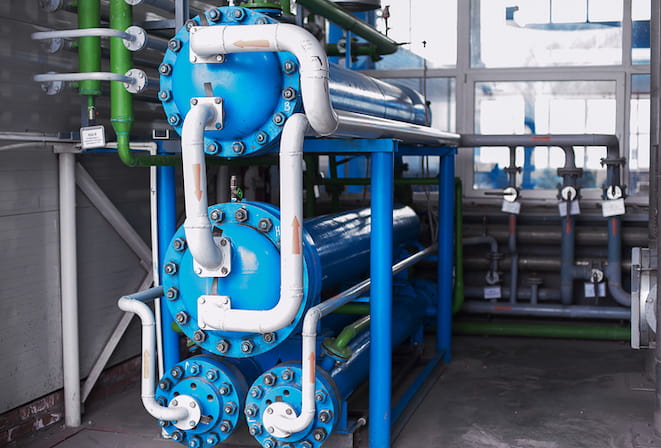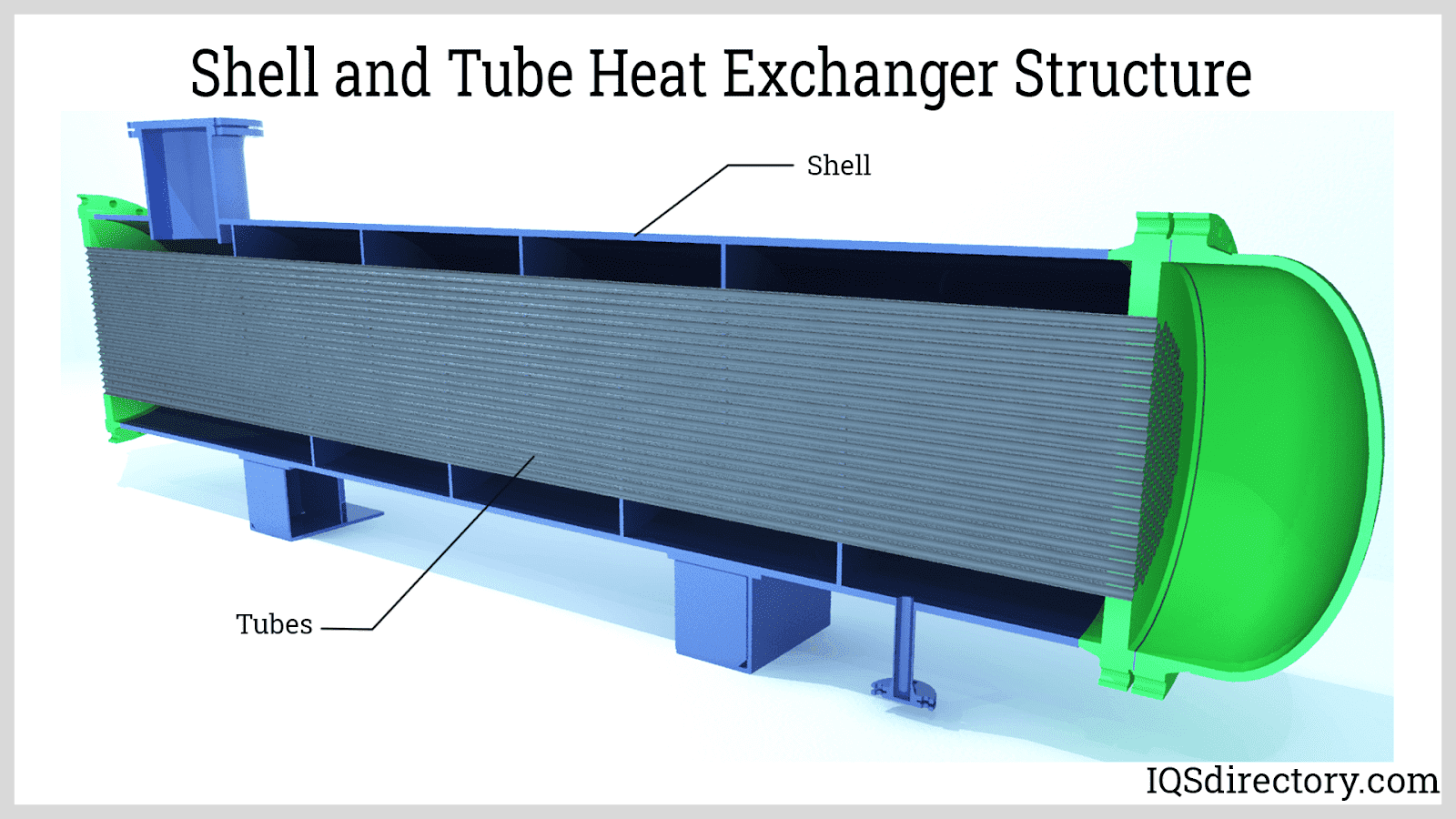Innovations in Heat Transfer Systems: What You Required to Know for Ideal Efficiency
Technologies in Heat transfer systems are changing efficiency across different industries. Advanced products like graphene and nanofluids assure considerable improvements in thermal conductivity. The assimilation of IoT and equipment understanding offers possibilities for real-time monitoring and improved power effectiveness. However, the landscape of thermal monitoring is rapidly developing (DVS Heat Transfer Systems). Recognizing these advancements is vital for attaining suitable system performance and sustainability in the future. What certain innovations are forming this improvement?
Emerging Products for Boosted Heat Transfer

Advanced Heat Exchanger Designs
While standard Heat exchangers have offered their purpose in different applications, progressed layouts are now emerging to meet the boosting demands for performance and efficiency. These cutting-edge layouts, such as plate, shell-and-tube, and finned-tube Heat exchangers, include enhanced surface and improved circulation patterns to raise thermal transfer prices. In addition, portable layouts enable minimized room demands without endangering efficiency. Advanced products, such as compounds and corrosion-resistant alloys, additionally enhance resilience and performance under extreme conditions. Simulation modern technologies and computational liquid dynamics are increasingly used to refine these layouts, making sure peak Heat transfer attributes. As industries look for to decrease power intake and take full advantage of result, the fostering of sophisticated Heat exchanger designs is crucial in accomplishing these goals.
The Function of Nanotechnology in Heat Transfer
Nanotechnology plays a vital duty in enhancing thermal conductivity within Heat transfer systems. By manipulating materials at the nanoscale, researchers have accomplished substantial improvements in power effectiveness. These advancements not only enhance efficiency however additionally add to even more lasting energy solutions.
Improved Thermal Conductivity
Significant innovations in thermal conductivity have arised via the application of nanotechnology, changing Heat transfer systems across various markets. By including nanoparticles into Heat transfer liquids and products, scientists have actually achieved remarkable boosts in thermal conductivity. These nanoparticles, such as carbon nanotubes, graphene, and steel oxides, enhance the Heat transfer residential or commercial properties due to their high surface area and distinct thermal qualities. The resulting composites display boosted performance in applications varying from electronic devices cooling systems to renewable resource modern technologies. The capability to tailor the dimension, form, and composition of nanoparticles allows for maximized thermal management options. As a result, nanotechnology remains to play a crucial duty in the advancement of more efficient and reliable Heat transfer systems, leading the way for boosted industrial applications.
Power Performance Improvements

Integration of IoT in Heat Transfer Equipments
The assimilation of IoT in Heat transfer systems introduces the application of clever sensors that boost operational effectiveness. These sensors enable real-time data tracking, permitting immediate modifications and optimizations. This technical advancement has the possible Extra resources to substantially boost performance and energy monitoring in Heat transfer applications.
Smart Sensors Application
As Heat transfer systems develop, the assimilation of smart sensors with the Web of Points (IoT) has actually arised as a transformative strategy. These sensors make it possible for real-time tracking of flow, pressure, and temperature prices, boosting system efficiency and reliability. By gathering and sending data, they facilitate aggressive maintenance, decreasing the risk of system failures. In addition, clever sensing units add to energy savings by refining operational criteria based upon ecological problems. Their capacity to evaluate anomalies and fads enables notified decision-making, making certain peak efficiency of Heat transfer systems. As markets increasingly embrace this technology, the execution of smart sensing units stands to reinvent exactly how Heat transfer systems are taken care of, leading the way for higher sustainability and boosted performance results.
Real-Time Information Tracking
How can real-time data monitoring boost the effectiveness of Heat transfer systems? By integrating Web of Things (IoT) technology, Heat transfer systems can leverage continual data collection from smart sensing units. This real-time surveillance enables prompt evaluation of pressure, temperature, and flow prices, allowing operators to identify ineffectiveness immediately. As a result, modifications can be made to maximize efficiency, decrease power usage, try this website and expand tools life-span. Additionally, predictive maintenance can be applied, reducing unanticipated downtime and costly repair services. The ability to envision performance metrics through control panels boosts decision-making, fostering a positive strategy to system management. Inevitably, real-time data keeping an eye on not just enhances operational effectiveness yet additionally adds to sustainability goals within commercial procedures.
Power Effectiveness and Sustainability Trends
Power efficiency and sustainability patterns are improving the landscape of Heat transfer systems, driving technology and compliance across various industries. Organizations are increasingly focusing on energy-efficient designs to lower operational costs and lessen ecological effects. The integration of renewable resource resources is ending up being much more widespread, allowing Heat transfer systems to operate sustainably while fulfilling regulative requirements. Additionally, innovations in materials and technologies advertise reduced power usage and enhance overall performance. Lifecycle assessments are likewise gaining grip, allowing business to review the ecological influence of Heat transfer systems from manufacturing to disposal. This concentrate on sustainability not only supports company obligation however likewise placements organizations competitively in a market where consumers significantly prefer environment-friendly remedies. Subsequently, power effectiveness and sustainability remain vital considerations for future developments in Heat transfer technology.
Developments in Thermal Administration Solutions
While the need for reliable Heat transfer proceeds to increase, technologies in thermal monitoring solutions are emerging to address both efficiency and sustainability obstacles. article source Advanced materials, such as stage modification materials and nanofluids, are being developed to improve Heat transfer efficiency - DVS Heat Transfer Systems. These products enhance thermal conductivity and enable better temperature level policy in various applications. Furthermore, innovations like active thermal control systems are obtaining traction, enabling real-time changes to handle Heat flow effectively. These systems add to energy cost savings and minimize the ecological impact of thermal processes. Additionally, the combination of IoT in thermal management helps with surveillance and predictive maintenance, making certain optimized performance and longevity of Heat transfer systems. Generally, these developments stand for considerable strides toward more lasting thermal administration techniques
Future Instructions in Heat Transfer Technology
Emerging advancements in thermal administration remedies indicate an encouraging future for Heat transfer technology. Scientists are progressively focusing on creating materials with premium thermal conductivity and boosted power efficiency. Technologies such as nanofluids, which contain put on hold nanoparticles, supply substantial improvements in Heat transfer performance. Furthermore, the integration of clever materials that adjust to varying temperature problems is getting grip, enabling more effective and receptive systems. The surge of additive manufacturing techniques is likewise making it possible for the layout of complex Heat exchanger geometries that maximize fluid flow. Additionally, the execution of machine learning formulas is anticipated to change the optimization of Heat transfer systems, helping with anticipating maintenance and efficiency improvement. Jointly, these improvements are positioned to change the landscape of Heat transfer technologies in various markets.

Frequently Asked Concerns

Just how Do I Select the Right Heat Transfer System for My Application?
Picking the best Heat transfer system entails assessing application requirements, including temperature arrays, liquid buildings, and effectiveness requirements. Examining system kinds, maintenance factors to consider, and cost-effectiveness additionally plays a necessary duty in making a notified choice.
What Are the Upkeep Demands for Advanced Heat Exchangers?
Maintenance requirements for sophisticated Heat exchangers typically consist of routine evaluations, monitoring for leakages, cleansing of surfaces, and ensuring excellent circulation prices. Sticking to supplier standards guarantees effective procedure and extends the devices's lifespan.
How Do Environmental Elements Affect Heat Transfer Performance?
Environmental aspects substantially affect Heat transfer efficiency. Variations in air flow, temperature level, and moisture influence thermal conductivity and convective Heat transfer, eventually impacting system performance and demanding factor to consider throughout the style and operation of Heat transfer systems.
What Security Criteria Relate To Heat Transfer Equipments?
Security standards for Heat transfer systems commonly include guidelines from companies such as ASME and ASTM. DVS Heat Transfer Systems. These requirements address products, design, and functional techniques to ensure integrity, effectiveness, and security against threats in numerous applications
How Can I Fix Typical Heat Transfer System Issues?
Fixing usual Heat transfer system concerns entails looking for leakages, making certain appropriate fluid circulation, evaluating insulation stability, and confirming temperature level differentials. Identifying these variables can help keep system efficiency and avoid further issues.
Nanotechnology plays a necessary duty in boosting thermal conductivity within Heat transfer systems. Significant developments in thermal conductivity have actually emerged through the application of nanotechnology, transforming Heat transfer systems across different markets. Developments in thermal conductivity with nanotechnology have led the way for remarkable improvements in power performance within Heat transfer systems. Power performance and sustainability patterns are reshaping the landscape of Heat transfer systems, driving development and compliance throughout different industries. The assimilation of IoT in thermal administration promotes surveillance and predictive maintenance, making certain enhanced performance and long life of Heat transfer systems.